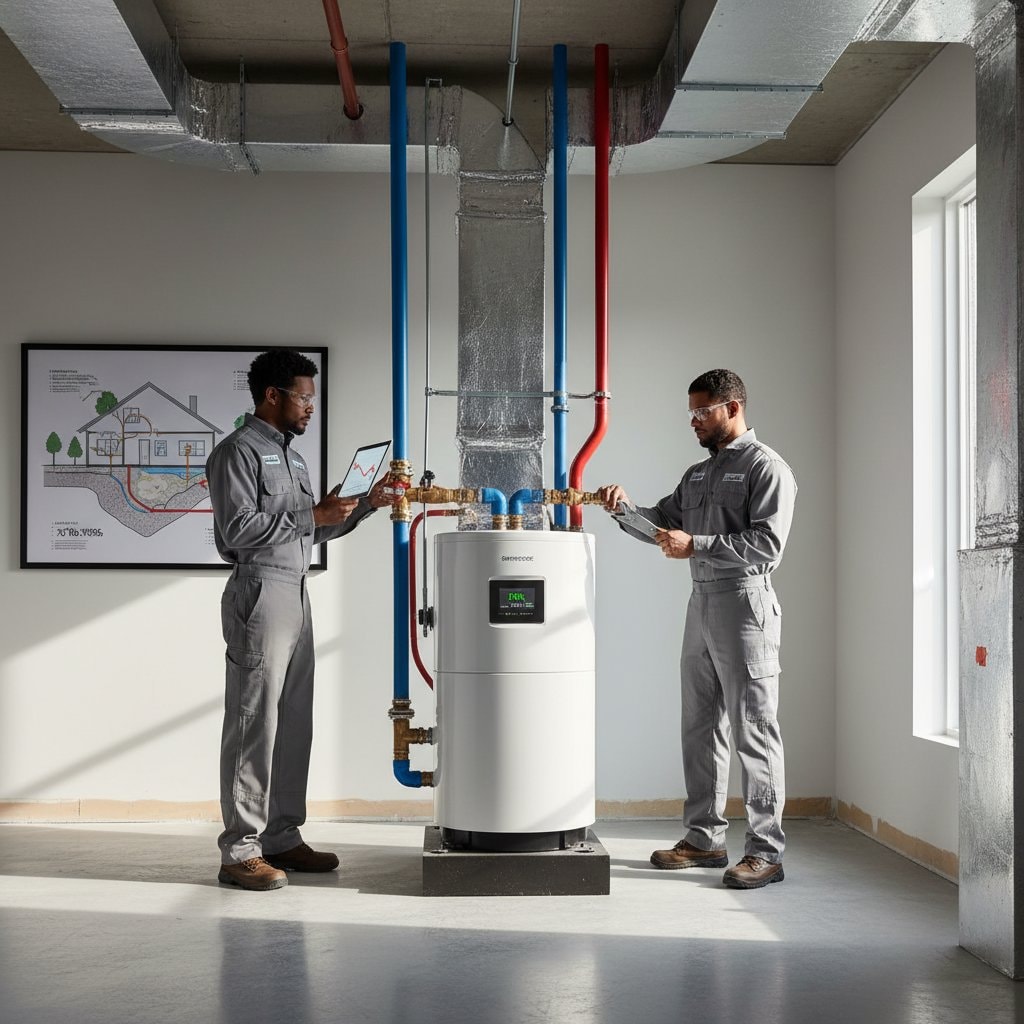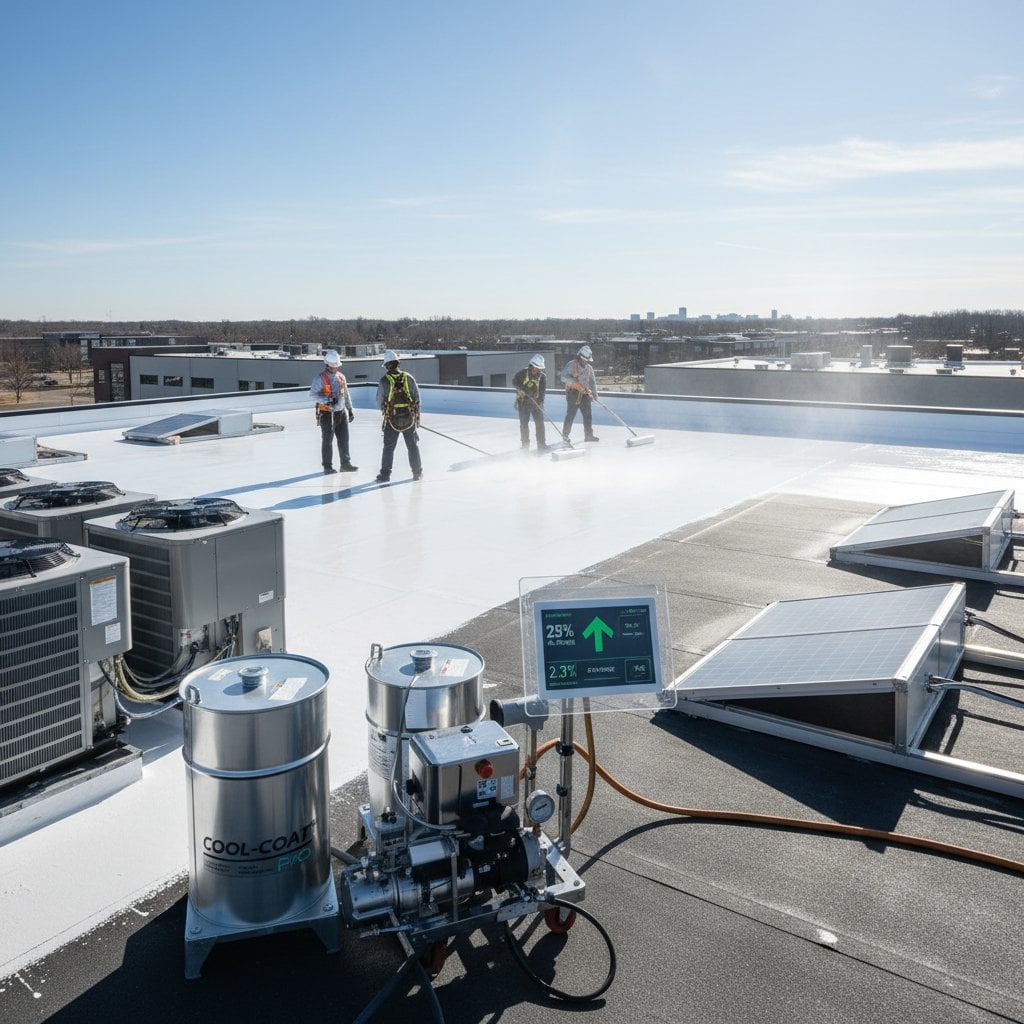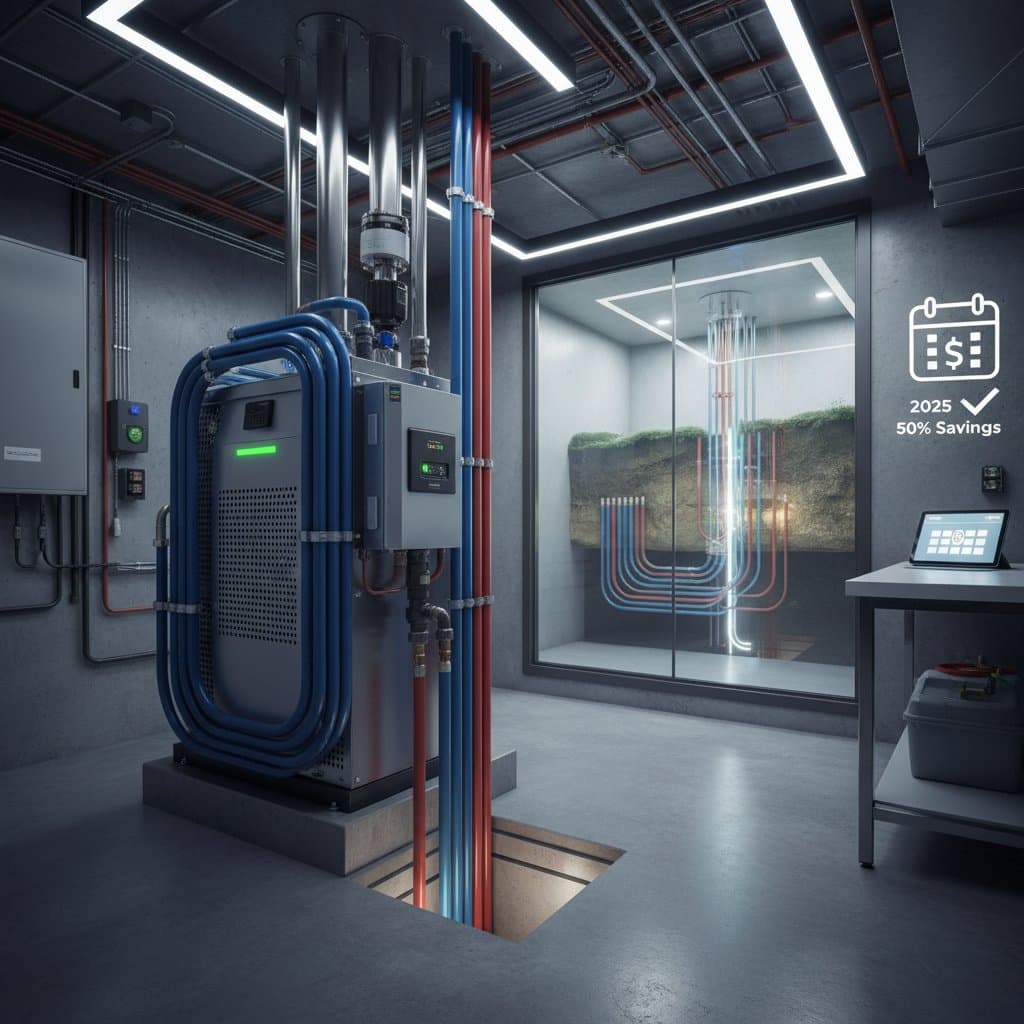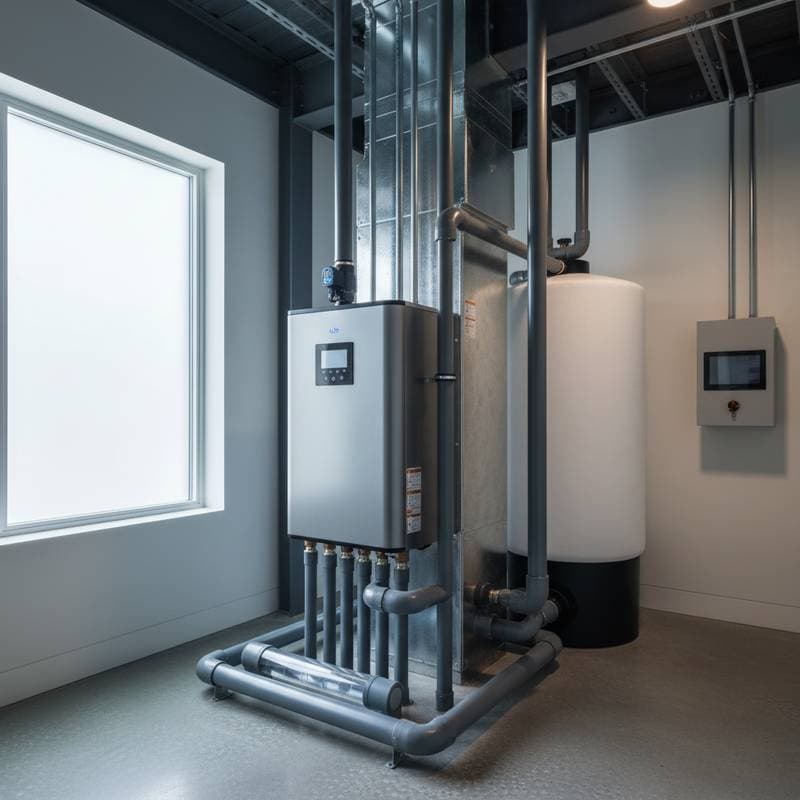Key Advantages of Geothermal Systems
Federal tax credits make ground-source heat pumps more affordable for homeowners. These incentives cover a large share of installation costs, which typically range from $20,000 to $30,000 depending on system size and site conditions. Homeowners can expect energy savings of 30 to 70 percent compared to traditional HVAC systems, translating to hundreds of dollars annually on utility bills. To achieve these benefits, focus on system design tailored to your property, including soil testing and installation by certified professionals.
How Geothermal Systems Operate
Geothermal systems use the earth's stable underground temperature, usually between 45 and 75 degrees Fahrenheit, to heat and cool homes efficiently. Unlike air-source heat pumps that depend on fluctuating outdoor air, these systems draw from a consistent ground source via buried loops. This stability results in superior efficiency, with coefficients of performance ranging from 3 to 5, meaning the system delivers three to five units of heating or cooling for every unit of electricity consumed.
The setup includes underground pipe loops filled with water or antifreeze, a heat pump unit inside the home, and a ductwork or radiant system for distribution. Once installed, these systems require minimal maintenance and can last 20 to 50 years, far outpacing conventional HVAC equipment.
Environmental and Comfort Advantages
By transferring heat instead of generating it through fuel combustion, geothermal systems cut greenhouse gas emissions by up to 70 percent compared to gas furnaces or standard air conditioners. This method reduces overall energy use and avoids pollutants like carbon monoxide, leading to cleaner indoor air. Homeowners contribute to broader environmental goals while enjoying lower carbon footprints.
These systems operate quietly without noisy outdoor compressors, creating serene home environments. They also maintain even temperatures throughout the house, eliminating hot and cold spots common in traditional setups. Such consistent comfort enhances daily life and supports long-term sustainability.
Site Assessment and Installation Essentials
A professional site evaluation is crucial to determine the best geothermal configuration for your property. Experts analyze soil type, available land space, and groundwater levels to decide between closed-loop systems, which circulate fluid through sealed pipes, or open-loop systems that draw directly from wells. Local building codes and environmental factors also influence the choice.
Hire a certified geothermal contractor experienced in your region. Proper sizing ensures the system matches your home's heating and cooling needs, while loop depths of 100 to 400 feet optimize heat exchange. Installation involves drilling or trenching for loops, connecting them to the heat pump, and integrating with existing HVAC infrastructure, resulting in a durable setup with low ongoing needs.
Financial Strategies and Cost Management
While tax credits reduce upfront costs, explore financing options like home equity lines of credit, green energy loans from banks, or utility company payment plans. Compare interest rates against expected annual savings of $500 to $1,500 to confirm payback periods of five to ten years. In many cases, monthly energy bill reductions offset loan payments from day one.
Budget an extra 10 percent for unforeseen issues, such as rocky soil requiring specialized drilling equipment or adjustments for high water tables. This buffer keeps the project on track and prevents budget overruns, ensuring a smooth transition to efficient home energy use.
Securing and Enhancing Tax Incentives
To qualify for the federal Investment Tax Credit, systems must meet energy efficiency standards set by the IRS, such as a minimum coefficient of performance of 3.3 for water-source units. Document everything: keep receipts for equipment and labor, plus certifications from installers. The credit applies to 30 percent of total costs with no upper limit, making it a powerful tool for affordability.
Combine federal credits with state rebates, which can add $1,000 to $5,000, or local utility incentives for energy-efficient upgrades. Consult a tax advisor early to navigate eligibility and file Form 5695 accurately. These layered benefits accelerate your return on investment and maximize financial gains.
Sustained Performance and Upkeep Practices
After installation, geothermal systems need only annual professional inspections to check refrigerant levels, pump operation, and loop pressure. The buried components resist weathering and corrosion, often lasting 50 years or more, while indoor heat pumps endure 20 to 25 years. This longevity doubles the lifespan of typical HVAC systems.
Perform simple homeowner tasks, like cleaning air filters quarterly, to maintain efficiency. Track monthly energy bills to verify savings and spot any performance dips early. Consistent care ensures the system withstands energy price hikes, providing reliable comfort and cost control for years.
Steps to Implement Your Geothermal Upgrade
Start with a free consultation from a certified contractor to assess your site's feasibility and estimate costs. Research local incentives through the Database of State Incentives for Renewables and Efficiency or your utility provider. Prepare documentation, including energy audits, to support tax credit claims.
Finalize financing and schedule installation once details align with your goals. After setup, test the system thoroughly and monitor initial performance. This methodical process delivers lasting savings, superior comfort, and eco-friendly energy management customized to your home.










